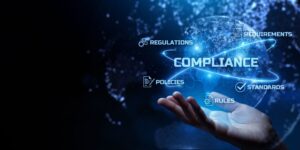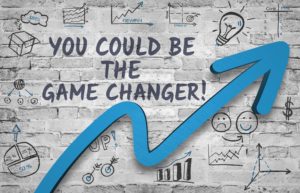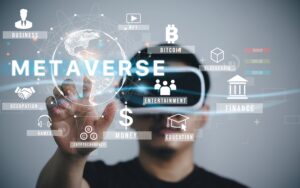Machine learning (ML) is a branch of artificial intelligence technology that enables computers to learn from data and make predictions or decisions. However, ML
technology can also raise ethical issues and challenges that affect individuals and society. ML can raise more
ethical issues than other forms of AI because:
– ML is more pervasive and ubiquitous: ML can be applied to a wide range of domains and contexts, such as health care, education, finance, justice, security, entertainment, and social media. This means that ML can affect more aspects of human life and society than other forms of AI that are more specialized or limited in scope.
– ML is more autonomous and adaptive: ML can learn from data and feedback without explicit human guidance or intervention. This autonomy means that ML can evolve and change over time, potentially in unpredictable or unintended ways. This also means that ML can have more agency and influence over human actions and outcomes than other forms of AI that are more controlled or fixed.
– ML is more complex and opaque: ML can produce complex and opaque models and systems that are difficult to apply, understand and interpret, even by experts. This means that ML can have more uncertainty and ambiguity about its processes and outcomes than other forms of AI that are more simple or transparent.
– ML is more data-driven and data-dependent: ML depends on the quality and quantity of the data it is trained on and uses for prediction or decision making. This means that ML can inherit or amplify biases and errors that exist in the data, algorithms, or human judgments that influence its development and deployment. This also means that ML can create or raise new ethical issues related to data collection, processing, analysis, and use.

Ethical issues with ML
Here are some of the top 10 ethical issues with the use of ML technology:
– Privacy and surveillance: ML can collect, process, and analyze large amounts of personal and sensitive data, such as biometric, health, financial, or behavioral data. This can pose risks to the privacy and security of individuals and groups, especially if the data is used without their consent or knowledge, or if it is accessed or misused by unauthorized or malicious parties. Moreover, ML can enable mass surveillance and tracking of individuals and populations, potentially infringing on their civil liberties and human rights.
– Transparency and explainability: ML can produce complex and opaque models and systems that are difficult to understand and interpret, even by experts. This can limit the transparency and accountability of ML processes and outcomes, especially if they are used for high-stakes or sensitive decisions that affect people’s lives, such as health care, education, employment, or justice. Moreover, ML can lack explainability and justification for its predictions or recommendations, making it hard to verify its validity, reliability, and fairness.
– Bias and discrimination: ML can inherit or amplify biases and prejudices that exist in the data, algorithms, or human judgments that influence its development and deployment. This can result in unfair or discriminatory outcomes that disadvantage certain groups or individuals based on their characteristics, such as race, gender, age, disability, or sexual orientation. Moreover, ML can create or reinforce stereotypes and social norms that may harm the diversity and inclusion of individuals and society.
– Autonomy and agency: ML can influence or interfere with the autonomy and agency of individuals and groups, especially if it is used to manipulate, persuade, coerce, or control their behavior, preferences, opinions, or emotions. Moreover, ML can affect the identity and dignity of individuals and groups, especially if it is used to replace, augment, or enhance their cognitive or physical abilities.
– Responsibility and liability: ML can raise questions and challenges about the responsibility and liability for the actions and consequences of ML models and systems. This can involve multiple actors and stakeholders, such as developers, users, providers, regulators, researchers, educators, beneficiaries, victims, or critics. Moreover, ML can create moral dilemmas and trade-offs that may conflict with ethical values and principles.
– Trust and acceptance: ML can affect the trust and acceptance of individuals and society towards ML models and systems. This can depend on factors such as the quality, accuracy, reliability, fairness, transparency, explainability, usability, security, privacy of ML models and systems. Moreover, trust and acceptance can depend on factors such as the awareness, education, communication, participation, representation, and empowerment of individuals and society regarding ML models and systems.
– Beneficence and non-maleficence: ML can have positive or negative impacts on the well being and welfare of individuals and society. This can involve aspects such as health, safety, education, employment, justice, environment, culture, or democracy. Moreover, ML can have intended or unintended consequences that may be beneficial or harmful to individuals and society, both in the short-term and in the long-term.
– Justice and fairness: ML can affect the justice and fairness of individuals and society. This can involve aspects such as equality, equity, diversity, inclusion, accessibility, accountability, redress, or participation. Moreover, ML can create or exacerbate inequalities or injustices that may affect certain groups or individuals more than others, such as minorities, vulnerable, or marginalized populations.
– Human dignity and human rights: ML can affect the human dignity and human rights of individuals and society. This can involve aspects such as respect, recognition, autonomy, agency, identity, privacy, Security, freedom, or democracy. Moreover, ML can violate or undermine human dignity and human rights if it is used for malicious or unethical purposes, such as exploitation, discrimination, manipulation, coercion, control, or oppression.
– Human values and ethics: ML can reflect or challenge human values and ethics of individuals and society. This can involve aspects such as morality, integrity, honesty, compassion, empathy, solidarity or altruism. Moreover, ML can create or raise new or emerging values and ethics that may not be well-defined or well-understood, such as trustworthiness, explainability, responsibility, or sustainability.
Are you a technical, business or legal professional who works with technology adoption? Do you want to learn how to apply ethical frameworks and principles to your technology work and decision-making, understand the legal implications and challenges of new technologies and old laws, and navigate the complex and dynamic environment of technology innovation and regulation? If so, you need to check out this new book: Ethics, Law and Technology: Navigating Technology Adoption Challenges. This book is a practical guide for professionals who want to learn from the experts and stay updated in this fast-changing and exciting field.




